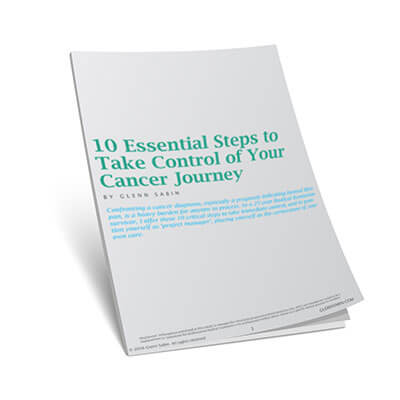In 1991, when I first learned I had an incurable form of leukemia, integrative oncology wasn’t even a term. Integrative cancer care programs were nonexistent at major cancer centers.
Put simply, there was nowhere for a newly diagnosed cancer patient like me to turn to learn about patient-centered, integrative approaches to disease management; at least not within the hallowed halls of esteemed U.S. cancer centers.
Limited Conventional Care Choices
My medical team included a leading local hematologist (an oncologist who specializes in blood cancers), and a preeminent oncologist and researcher at Harvard’s Dana-Farber Cancer Institute.
I was told there was nothing I could do to influence the course of my disease: my condition was not caused by my actions; it was triggered by my genetic predisposition for disease. “It’s not your fault.” “Live your life and enjoy your new wife.”
The advice, short and bittersweet; I’d married my childhood sweetheart, Linda, just two years prior.
The care options presented were limited and clear cut:
- An experimental bone marrow transplant that was potentially curative, but also carried —gasp—a 20% mortality rate from the procedure.
- Watchful waiting—essentially waiting for the disease to make its first move, then hammer it with a cocktail of chemotherapy and other drugs; a temporary reprieve from active disease.
Any discussion with my team of top oncologists on the benefits of good nutrition, physical activity or other positive lifestyle choices, were met with guarded skepticism. Quite the juxtaposition: both of these middle-aged men seemed fit. They exercised regularly and had healthy diets. (Yes, I asked them!)
However, I was consistently reminded that any behavioral change I chose to adopt would likely not positively impact my course with disease.
Their clear message: if I wanted to learn about other viable lifestyle options and strategies, I’d be flying solo. Thus began a 25-year journey of discovery which transitioned to a remarkable passage of healing.
[DOWNLOAD an excerpt from Glenn’s new book n of 1]
Integrative Oncology 2016
Today, a quarter century since my diagnosis of terminal cancer, virtually every major academic cancer center and health system in the U.S. features some level of an integrative oncology program. These centers offer patients the opportunity to become active, central participants in their own care.
Programs vary widely in terms of clinical and education offered, as well as how they charge for services. Many feature free or subsidized services, while others may partner with community-based cancer support non-profits like the Cancer Support Community or the impressive Wellness House in Hinsdale, Illinois.
Though I came to learn there were a few pioneering private clinics across the country providing integrative approaches to treating and managing disease, the present landscape sharply contrasts that of the time of my diagnosis.
Now hundreds of private clinics, centers, and solo practitioners across medical disciplines, including oncologists, primary care physicians, naturopathic physicians, doctors of traditional Chinese medicine, dieticians, nutritionists, and psychologists, specialize in integrative approaches to support cancer patients. A national directory of these providers can be found here.
Every cancer patient deserves the opportunity to participate in her own healing, however best individually defined.
There’s still a long way to go until the fundamentals of integrative oncology are available to us as the standard of cancer care. Nevertheless, we currently have more access than ever to quality integrative resources which provide the opportunity for us all to become an n of 1.
Join my private Facebook Group Anticancer Thrivers—a community forum for achieving your best life while living with cancer.


